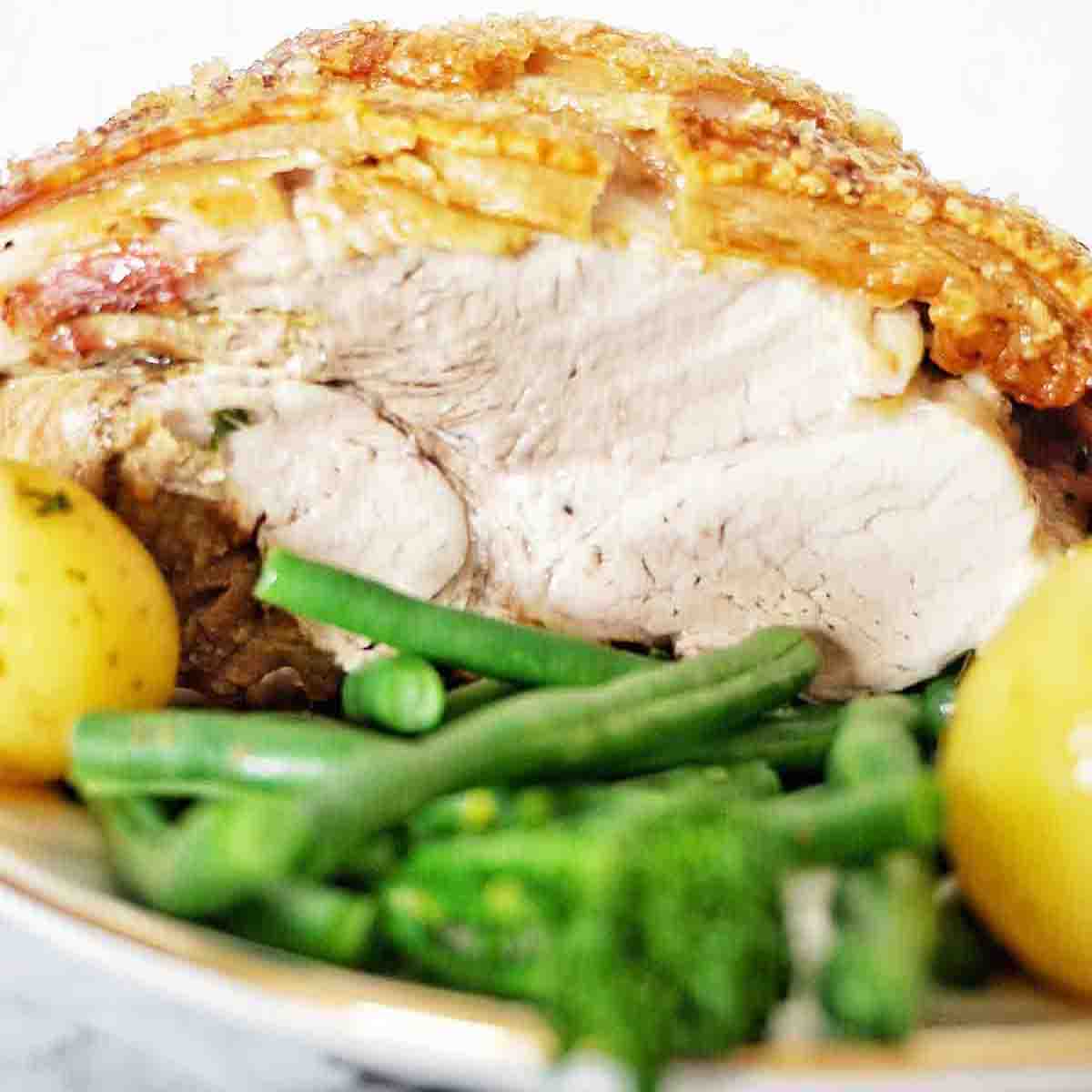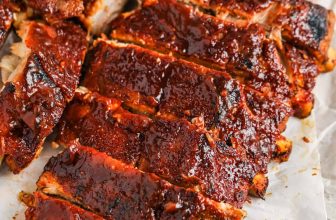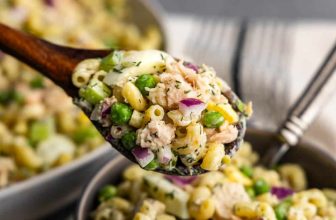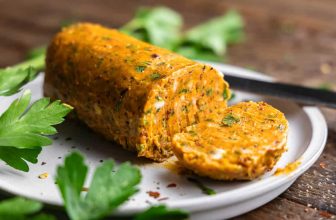
🍳 Instructions
Here are the step by step instructions to make the recipe. We start by seasoning the underside (non skin side) of the meat.
- Flip the meat underside up and season with salt and pepper (Photo 1)
- Then sprinkle with garlic and onion powders (Photo 2)
- Dry the pork skin using paper towel (Photo 3)
- Cover with olive oil (Photo 4)
👩🍳 How to Make Pork Leg Roast
To make the pork leg roast, we want to initially ensure that the skin has been given a chance to dry out. The best way to achieve this is to remove any packaging and place the pork on a plate in the fridge (uncovered) over night.
If you don’t have that much time, you can place it on a plate on the bench to allow it to come to room temperature as the starting point.
Next, flip the pork so that the underside is facing up. Season the meat with salt and black pepper.
Once done use both the garlic and onion powders on top of the salt and pepper, then rub these into the pork with your fingers.
🥩 Boneless Pork Roast
Next flip the pork so that the skin side is facing up and use a folded sheet of paper towel to thoroughly dry the skin like you see me doing in the photo above.
When the skin is dry pour olive oil over the top and use a basting brush to spread the olive oil over the skin.
- Sprinkle salt over the top of the olive oil (Photo 5)
Next sprinkle salt all over the skin as you see me about to do in the photo above.
- Add water to the base of the roasting pan (Photo 6)
Next pour 2 cups of water into the base of the roasting tray as shown in the photo above.
Once done, you can place the salted pork leg into the tray onto the rack as shown in the photo below.
- Transfer the pork into the baking tray (Photo 7)
Next we want to roast the pork leg using a combination of high heat (to get the crackling going) and moderate heat (to ensure the pork meat is cooked) and these temperatures are listed in the recipe card with time frames below.
You can also use the time at which you are changing over temperatures to top up the water in the base of the pan. This helps to stop the pork from drying out as it cooks.
Something to keep in mind is the recommended temperatures for cooked pork and these are getting the meat to an internal temperature of 70°C (juicy and moist) and 75°C (for firmer cooked meat). A digital thermometer is the way to achieve this and highly recommended 😉👌.





